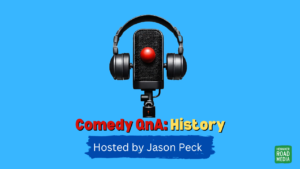I’ve had a bit of a think and this could be a way for the Borden Method for public speaking, as discussed in the former blog of Public Speaking Coach, Eric Feng and Mind Mapping as written about in my previous post could synergise. To start with we have from the Borden method that featured on Eric’s blog:
“Ho-Hum” (B-O-R-I-N-G!)
If you’ve read the earlier article you’ll know that this is what you imagine your audience shouts at you. So, if you’re able to plan your speech in advance, even if it’s a few minutes before, you know that you need a strong opening. Perhaps ask yourself what sort of information can I give my audience that will make them ask themselves “why?”
If they ask themselves why, then they’re engaged in your speech. This becomes the first branch on your Mind Map. As you move onto your first point imagine the audience saying to you:
“why bring that up?”
This means that you will need to find a good solid reason for the point that you have just made. Your point should relate to your overall message. The next part of the method is:
“For instance?”
This statement means that you will need to come up with an example to back up the point that you just made. So far, so straightforward. The final statement is:
“So what?”
This is the part where you conclude and draw out the core message of your speech. Now, the only problem with the Borden method I see is that it doesn’t support the standard Toastmasters structure, which is absolutely fine if you’re having to give a short talk.
But the three-point structure that Toastmasters uses is specific for helping you to create a 5-7 minute speech with three points and supporting information.
The point of this post is to work out a way to synergise the two methods. So for my money it’s simply a question of repeating steps two and three for your second and third points.
The final structure would, therefore, look something like this:
“B-O-R-I-N-G!”
“why bring that up?”
“For instance?”
“why bring that up?”
“For instance?”
“why bring that up?”
“For instance?”
“So what?”
You can see how this works in the Mind Map below:

Please note: once you’ve clicked on the image use your back arrow in your browser to come back to this blog!
In fact you could imagine the audience asking those questions for however many points you want to make in your speech. But for this example I’m just sticking to the classic three-point structure.Although, admittedly, it is now somewhat longer than the original four-point approach, it does provide a clearer method with each point backed up. The Mind Map is useful because it’s a memory technique and helps you remember the structure and it allows you to see how the ideas in your speech inter-connect.
So next time you have a speech that you have to create killer content off the cuff or, ideally, with a bit more planning try to think through the above structure so you can pre-empt your audience’s internal questions.
March 6th 2008 Update!!!
I’ve just come across a review of the Mind Mapping software iMindMap 2.0. I’ve used the trial version of the software, but unfortunately my laptop died in an unrelated incident. So I have to go through the process of getting hold of iMindMap again. Sigh. The software’s from Tony Buzan’s company and allows to create mind maps like you do with traditional pens and paper.
I also saw on Chuck Frey’s MindMapping Software blog that he’d written about 3 benefits of visual mapping in meetings. This can esaily be applied to individuals too. Here’s one of the benefits:“1. It creates a much higher level of engagement among meeting participants. This has to do with the way our minds work, Sibbett explains. When our minds see a work in progress – such as a sketch or a mind map – they want to fill in the missing details”.If you have longer to develop the speech and you plan to use it more than once, you can always add more to it and it can grow over a period of time.




9 comments
2 pings
Skip to comment form
Author
Thats’s exactly it, Craig. Obviously, the longer the speech the more points you have to include. Or the longer you spend on each point.
What could also happen is that you can include a note to yourself about when it’s necessary to re-capture an audience’s attention if they begin to fade during the speech or presentation.
As I said it can also help you see how the ideas inter-connect so you can develop your message and easily refer back to previous points that you’ve made. Well, that’s how mind maps generally work anyways, but I think it’s especially useful when it comes to speeches.
Thanks for the tip Jason, I need all the advice I can get.
That is a pretty cool idea – so you can create a great speech really quickly. Once you have that outline, then the rest is easy, isn’t it?
Author
Hey Ellee
Thanks fo stopping by. I hope you managed to take a look at the two other posts in this series so it makes a bit more sense…?
Hiya Eric,
Thanks for popping by, I know you’ve been busy touring round doing your “FAQ thang”. Be very interested to see how it works. Thanks for that. Maybe let your clients know that you saw it here…? Curious to know the feedback on it.
Thanks a lot guys.
Love the synergy! Going to use this to work with my clients on speaking off the cuff. Let you know how it goes. Cheers!
Hi Jason,
Thanks for the comments on my blog – and the link to yours. Really interesting stuff – and so well thought-out. Liked the mind-map; I can see you’ve put a lot into this.
All the best,
Colin
Author
Hey Colin,
No problem at all. Thanks for stopping by and for the compliments. Feel free to try it out and let me know if it works out for you.
Cheers
I have taken to using NovaMind for all my presentations. It’s fantastic – I can’t imagine myself giving another presentation without using a mindmap. I’m using the Mac version and use the built in presentation function, and love it – only just started using it, but it’s so much better than boring ppt slides (yawn) 😉
QA
Author
Hi Quinton
Thanks for that useful information. It looks quite interesting I tried using Tony Buzan’s iMindMap as I mentioned in my post. It seems to be a pretty organic way of doing things.It;s the closest to mind mapping with a pad and pens.
I’ve also heard good thing about Mind Manager, but not had a chance to play around with it yet.
Why don’t you experiment with using the mind map I posted about here and let me know how it works out for you.
[…] Read the rest of this great post here […]
[…] occurs to me that over the past couple of months I’ve been talking about Public Speaking and Mind Mapping without actually talking about the process that you go through in order to create a Mind […]